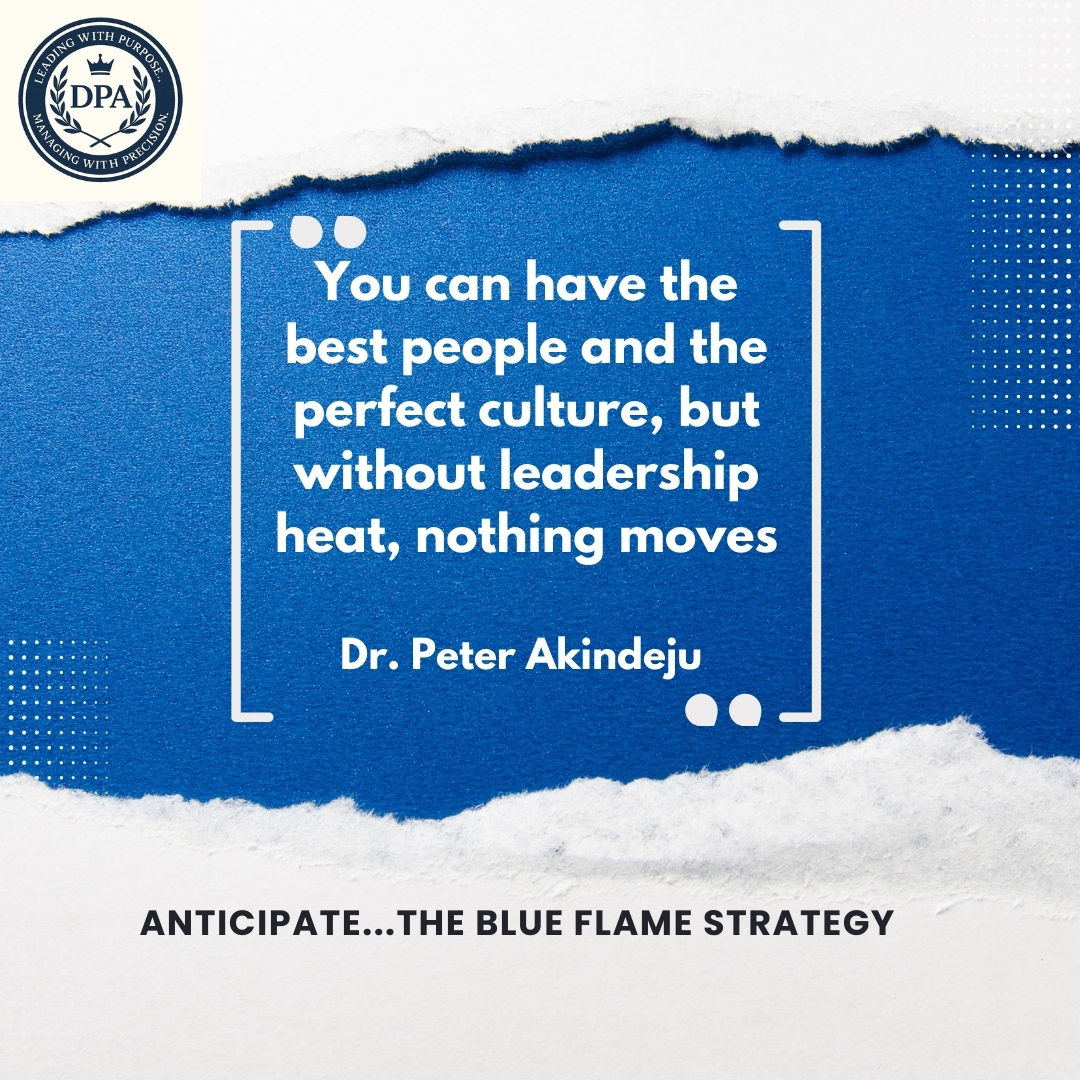
The Motionless Organization
On paper, the firm looked flawless. HR had recruited bright, diverse, and deeply qualified people. The culture deck was polished, filled with purpose statements, rituals, and even a weekly mindfulness hour. Yet targets slipped quarter after quarter. Cross-functional projects slowed to a crawl. Everyone was agreeable, but nothing truly moved.
It’s a paradox many companies face today. Talent is present, culture is designed with care, yet progress remains out of reach. What often makes the difference is leadership heat, the spark that transforms good intentions into real momentum, turning potential into performance.
What Leadership Heat Means
In adaptive leadership research, leaders are often described as thermostats who regulate tension within a system. They create just enough pressure to surface problems and drive change, while protecting their teams from the kind of stress that leads to burnout (Heifetz & Linsky, 2002).
John Kotter’s work on change echoes this idea. His model begins with urgency, because without a clear and compelling reason to act, even the best initiatives lose momentum (Kotter, 2008). Urgency becomes the first spark of leadership heat.
Culture and processes can ensure things run smoothly and consistently. Leadership heat, however, is what channels that stability into movement and turning discipline into decisive progress.
Why Culture and Talent Stall Without Heat
- Engagement is shaped by managers, not mission statements.
Gallup reports that only 27% of managers are engaged, yet they account for nearly 70% of the difference in team engagement. When leaders show up with energy, their teams follow (Gallup, 2025). - The toughest obstacles come from within.
According to Deloitte’s 2024 Global Human Capital Trends, the biggest barriers to progress are internal: rigid structures, ingrained norms, and cautious risk postures. Leadership heat is the force that melts this inertia (Deloitte, 2024). - Decision-making is being rewired at the top.
PwC’s 2025 Pulse Survey shows that 58% of CEOs are reshaping how decisions get made. They are inviting dissent, structuring debate, and turning up the temperature to ensure choices are both rigorous and collective (PwC, 2025). - Learning thrives in safe but challenging environments.
Google’s Project Aristotle found that psychological safety is the strongest predictor of team effectiveness. Amy Edmondson’s research shows that safety allows people to take risks and report errors. In these conditions, pressure doesn’t paralyze, it fuels growth (Edmondson, 1999).
A Leadership Case in Practice
A regional services firm had been treading water. Growth was flat, and while the CEO was proud of the company’s inclusive culture, market share was quietly slipping.
At a leadership offsite, she chose a different approach:
- She created urgency with evidence. Instead of general warnings, she put real numbers on the table: churn rates, lost bids, and the cost of inaction. Then she launched a 90-day sprint to rebuild the core offering.
- She raised the heat and held it. Cross-functional squads were given stretch targets and weekly forums where leaders pressed for clarity and fresh thinking. Missteps were mined for insight instead of being punished.
- She protected candor. Executives set the tone by admitting mistakes, rewarding dissent, and tying advancement to those who could challenge constructively.
Within two quarters, cycle times dropped, and two new offerings went live. Progress didn’t come from having “nicer people” or another culture deck, it came because leadership introduced and carefully regulated heat.
Practical Steps to Apply Leadership Heat
- Name the reality and the stakes. People move faster when they know exactly what’s on the line. Instead of general targets, spell it out: “If we don’t improve win rates by five points this quarter, we lose $12M in future revenue.” Clear stakes sharpen focus.
- Create spaces that hold the heat. Run short, regular sessions where teams test assumptions and make decisions in the room. These touchpoints keep energy high and prevent drift.
- Make candor the norm. Encourage people to voice what others might hold back. Capture dissent, share decision logs, and recognize those who speak up. This keeps trust strong while moving things forward quickly.
- Start with managers. Managers shape most of the day-to-day experience. Equip them to set clear expectations, coach under pressure, and model resilience. If they hold the heat well, their teams will too.
- Keep renewing urgency. Energy fades unless it’s refreshed. Leaders need to keep reconnecting goals to possibility and opportunity, so people feel motivated rather than drained. The flame has to be fed, not forced.
“You can have the right people and the perfect culture, but without leadership heat, nothing moves.”
Progress thrives where leadership is alive. Managers set the tone, and their presence, or absence, shapes the energy of a team. Too often, organizations stall because of internal inertia, not outside threats. Teams rise to challenges when leaders spark urgency while still creating an environment of trust and safety.
The challenge is not in producing heat but in channeling it. As John Kotter puts it, leadership is “about mobilizing a group of people to jump into a better future.”
References
- Deloitte. 2024 Global Human Capital Trends (14,000 respondents across 95 countries; internal constraints theme).
- Edmondson, A. C. (1999). “Psychological Safety and Learning Behavior in Work Teams.” Administrative Science Quarterly, 44(2), 350-383.
- Gallup. State of the Global Workplace 2024: Key Insights (Manager engagement 27%; managers account for ~70% of variance in team engagement)
- Google re: Work. “Guide: Understand team effectiveness (Project Aristotle)” psychological safety as the top factor.
- Heifetz, R. A., Grashow, A., & Linsky, M. (2009). The Practice of Adaptive Leadership.
- Kotter, J. P. (2008). A Sense of Urgency; and HBR video/article excerpts on urgency. R
- PwC. 28th Annual Global CEO Survey (2025) and CEOs 100 days in: What’s next for business? (2025 Pulse Survey).

